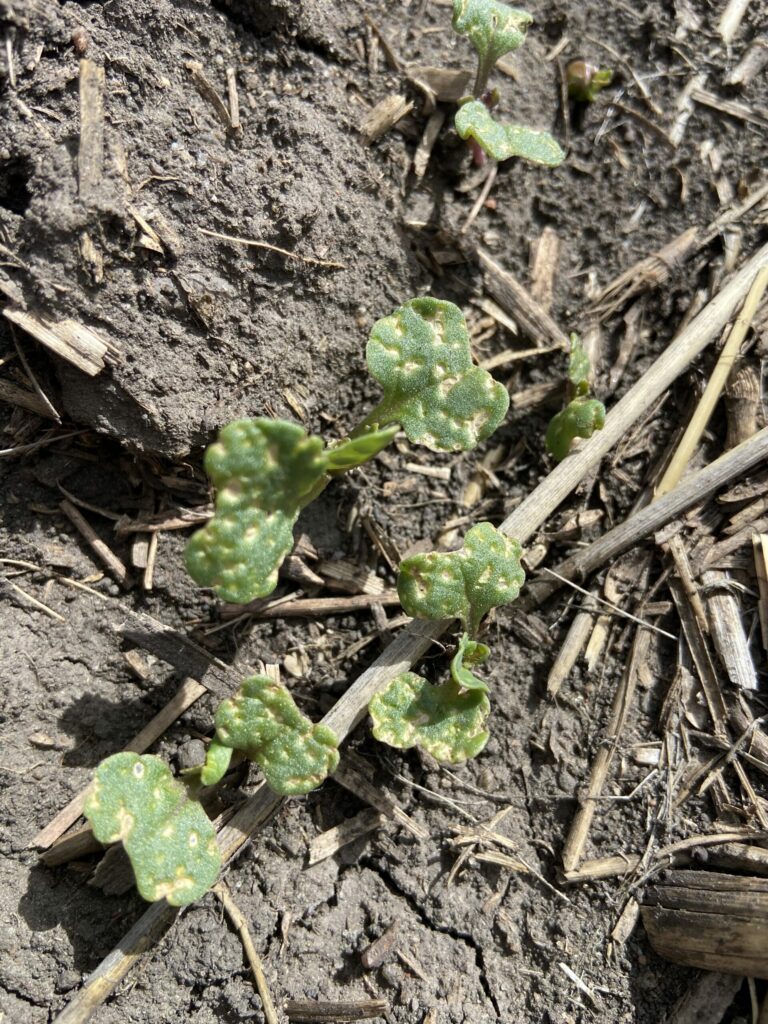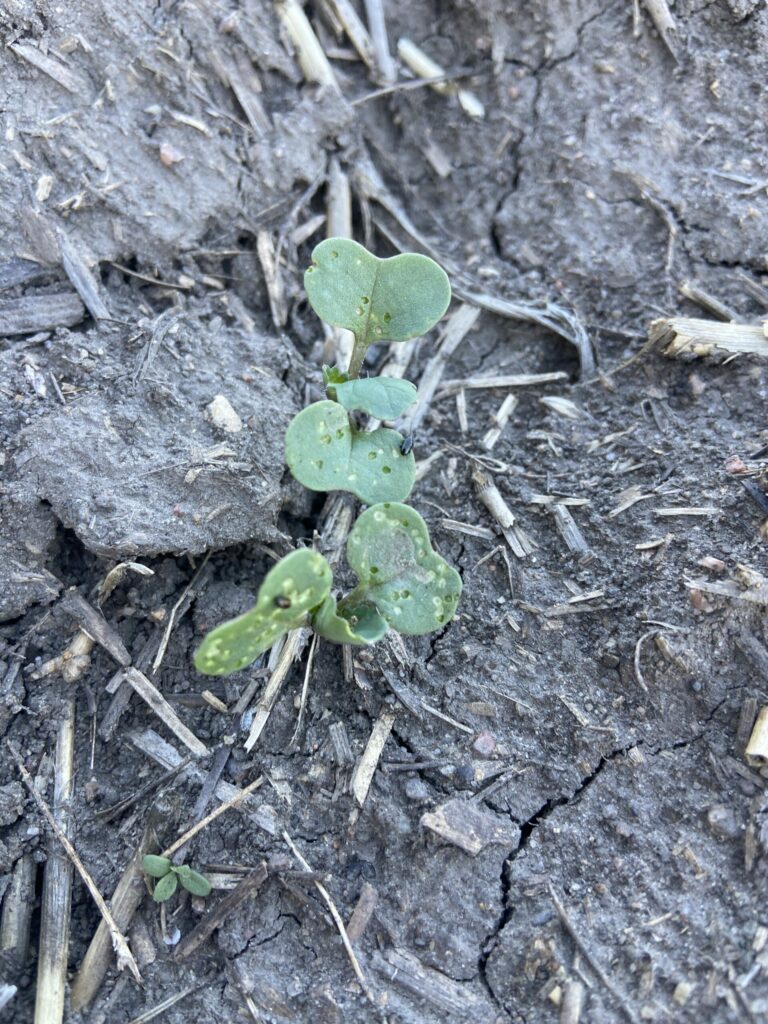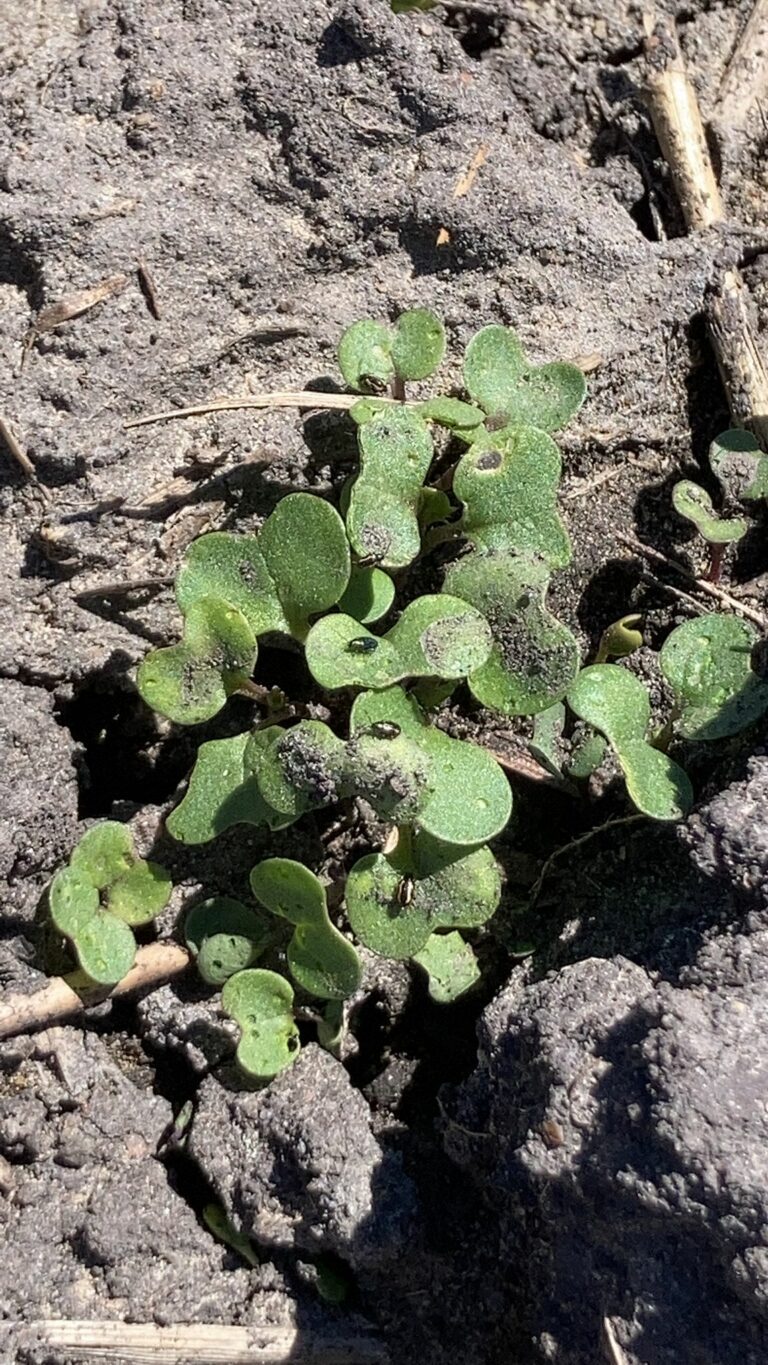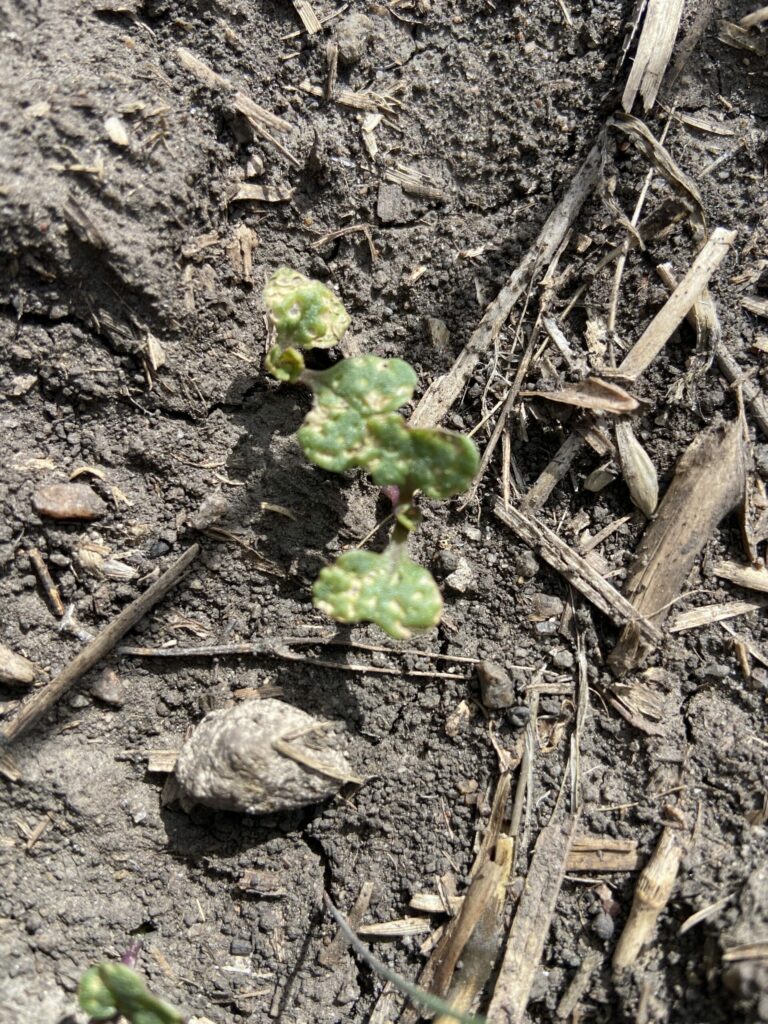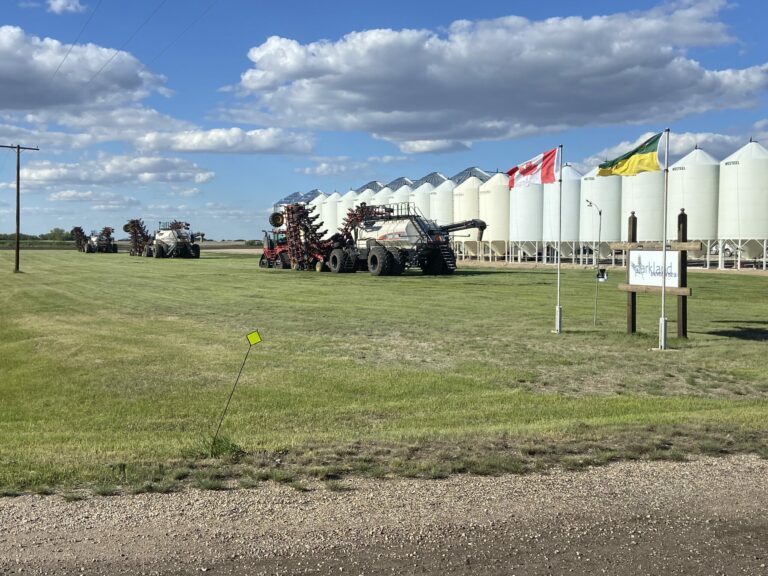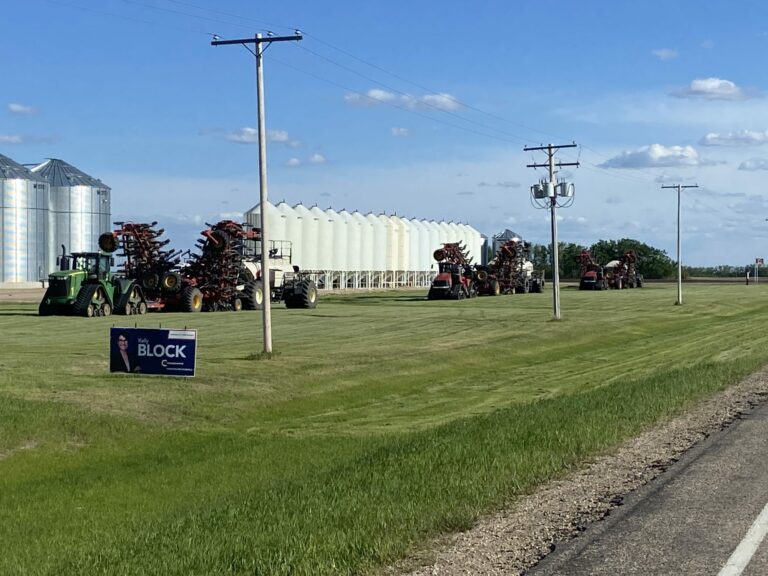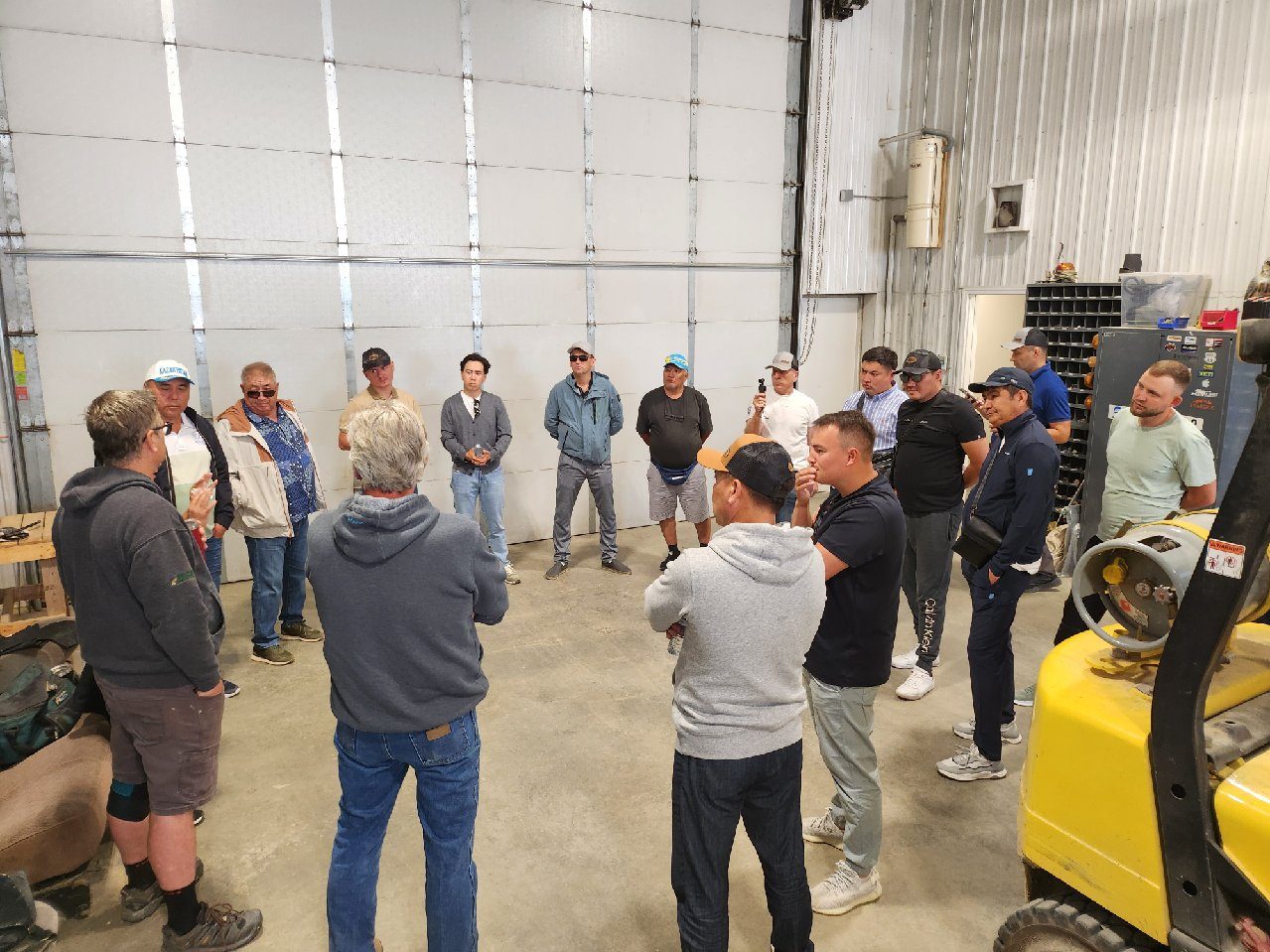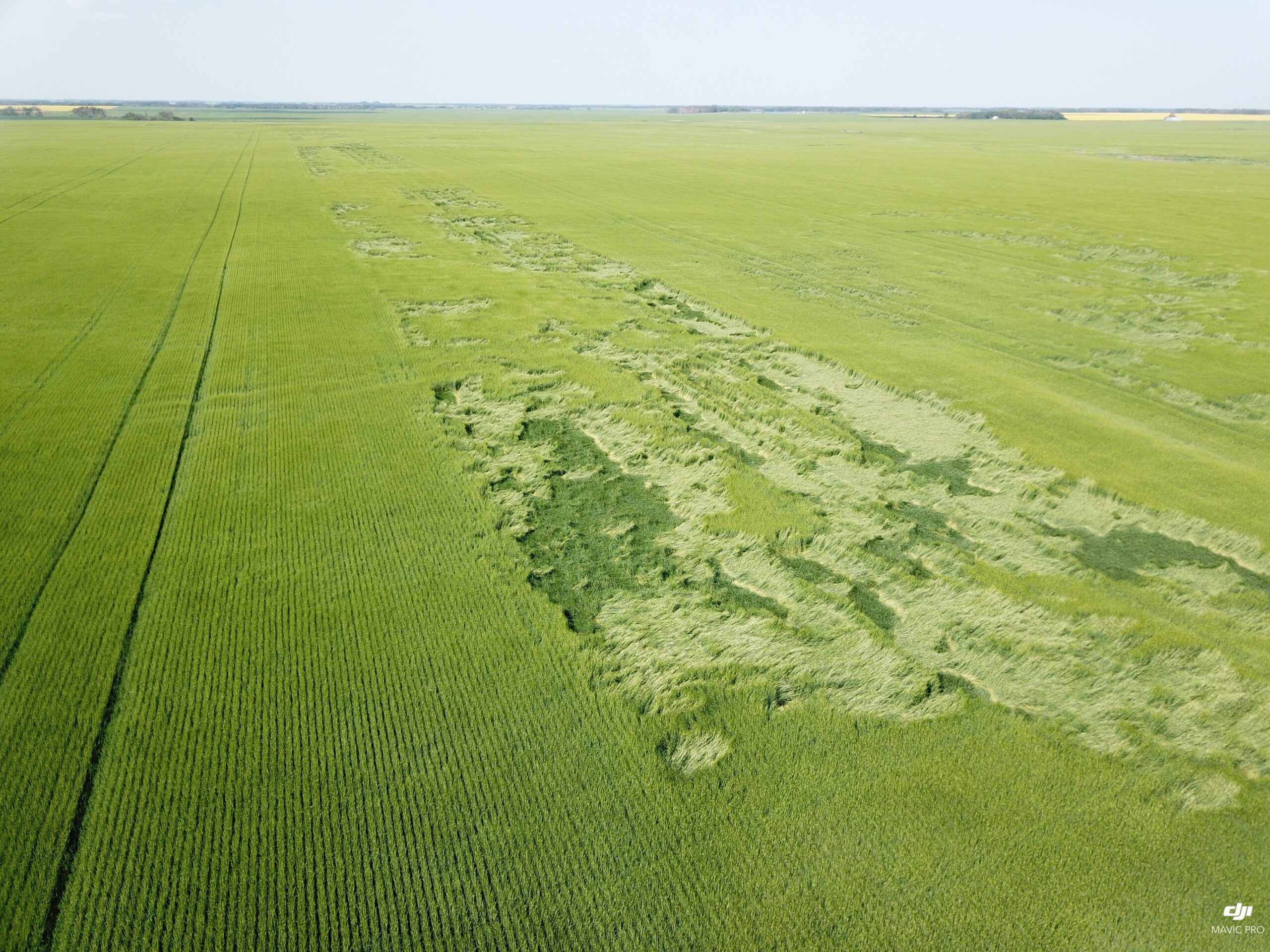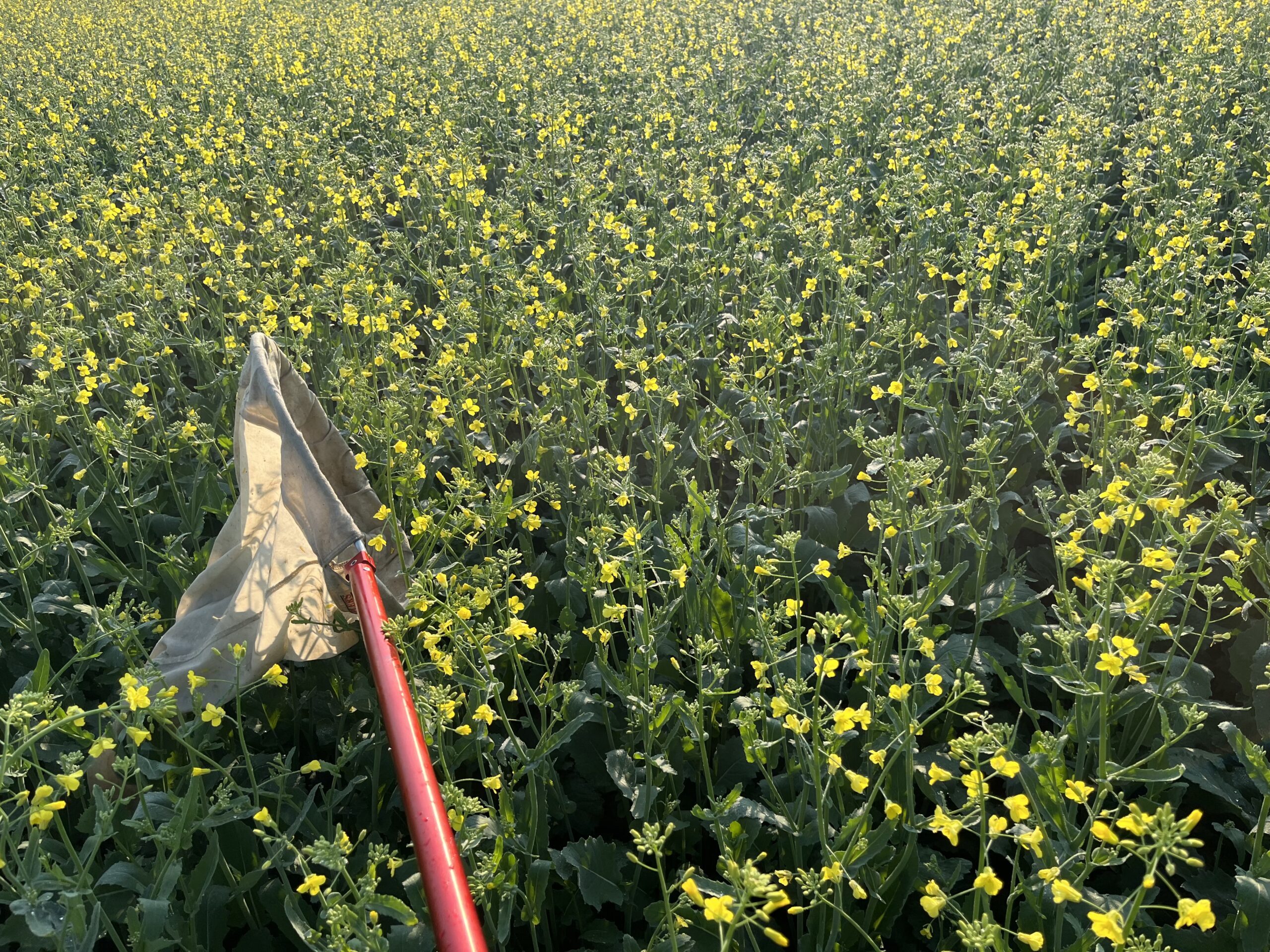It sure feels good to have the crop in the ground. I am still amazed at how quickly we were able to get the crop seeded when conditions were good. Thinking back on the 19th of May when we were barely 25% complete and we had just received 15-20mm of rain along with 3-4″ of wet, slushy snow – I never would have believed we would have been able to get it all done only a few days into June, especially given the fact we had 2 other rain delays in between…
Flea Bettles. They have been a bigger and bigger problem each season. The crucifer flea bettle was predominantly the main one up until about 5 or 6 years ago, when the striped one took over as the larger population. Each season it gets worse. Our seed treatment options are limited, which means we become more and more reliant on spraying insecticide. Some fields are requiring 2 applications. If you have a cool and windy spring, which we have been experiencing, the canola seedlings are slow to emerge and are not vigoursly growing. That is where these striped flea beetles can over take a field within a few days. Our current seed treatment options are supposed to give up to 21 days of protection from flea beetles – they need to bite the cotelydon in order to ingest the treatment, and that is supposed to kill them. When you only have 1 flea beetle per 10 plants that scenario can work just fine. But when there are 10 flea beetles per viable seedling – the seedling has no chance to survive. The other issue with the striped flea beetle – when it is cool and windy they still feed. Instead of feeding on the cotelydon, they feed on the stem of the plant, which is much more damaging, and much harder to detect.
We have sprayed all our early seeded canola and will likely have to spray the rest. Some of the canola has now been sprayed a second time. We even had to reseed a half section of canola. We checked 10 days after planted and there were no signs of damage. Three days later the crop was almost completely wiped out. Since it was still early enough – and we had access to an earlier maturing variety – we decided to reseed rather than take our chances with a much lower, and patchy, plant stand. At some point the environmental regulatory system needs to realize that they need to look at the bigger picture – and having access to a better seed treatment, even if it does have more negative outcomes – by the time you add one or two passes of insecticide – which is the better NET effect. I would have to presume the better calibre seed treatment option would have a smaller NET environmental impact than what we are currently having to do.
Outside the flea beetles – we will be starting our in crop herbicide application later on this week. The moisture we received during seeding has got all the weeds germinated and actively growing. We plan on taking advantage of this – previous years we have had to wait for rain to get the weeds growing, which made spraying season extend later than we would normally. We are also cleaning up the air drills and catching up on the rock picking – which always seems to get pushed to the back when you are short people.

